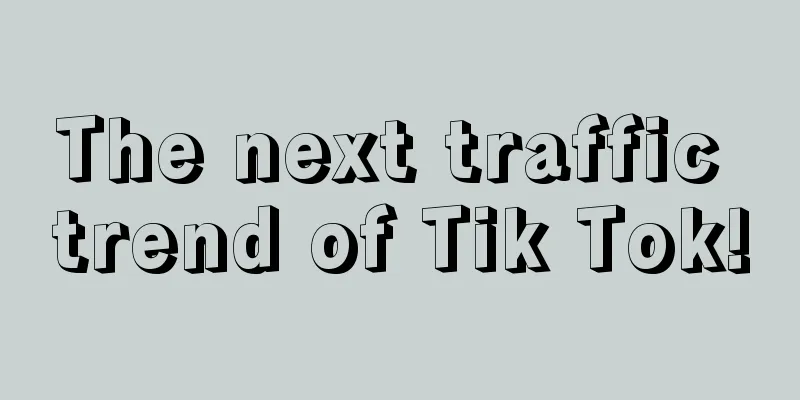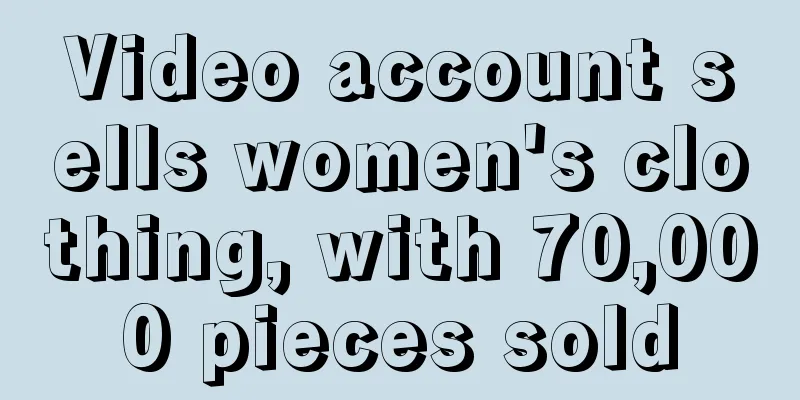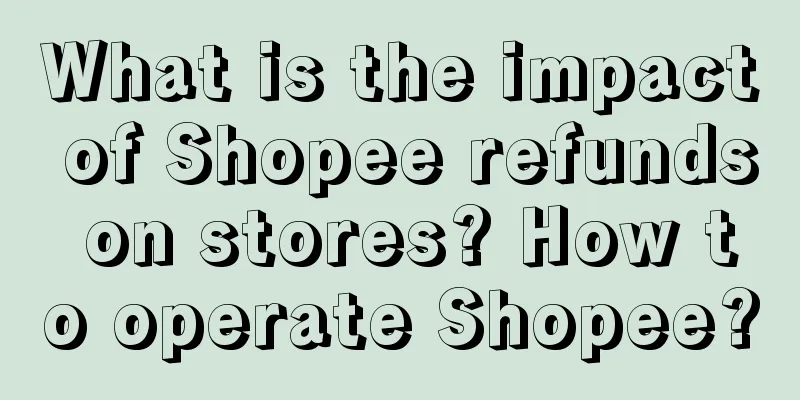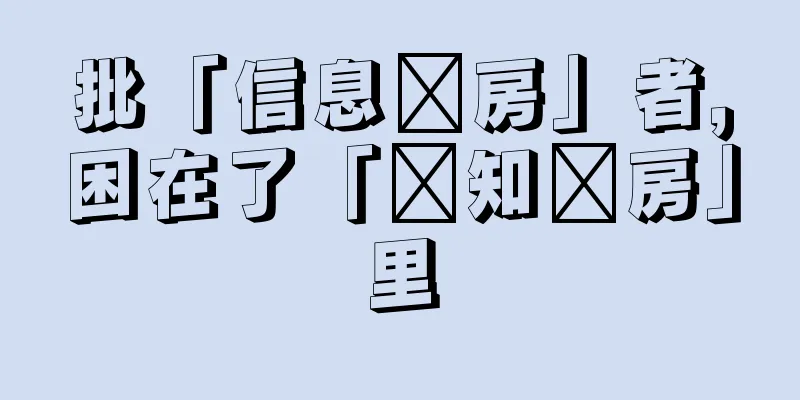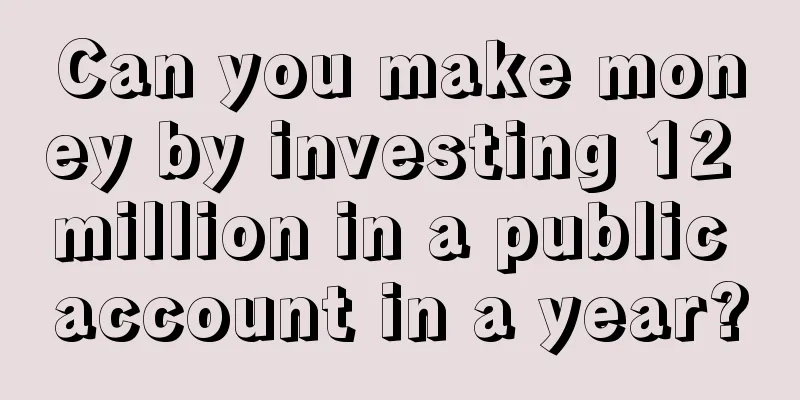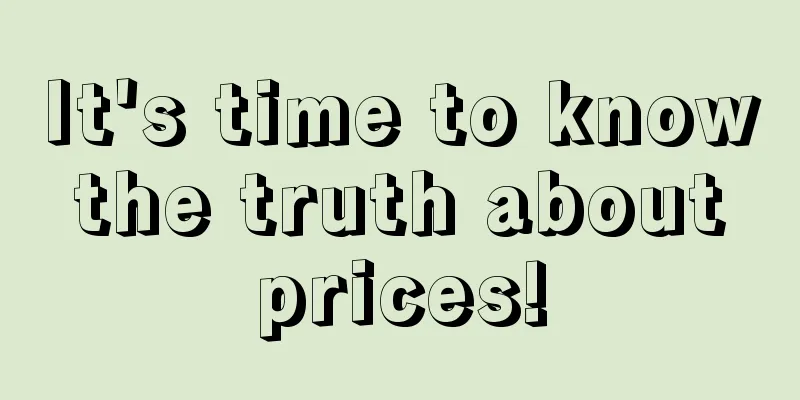Are you always self-satisfied at work or starting a business? You need to think like this
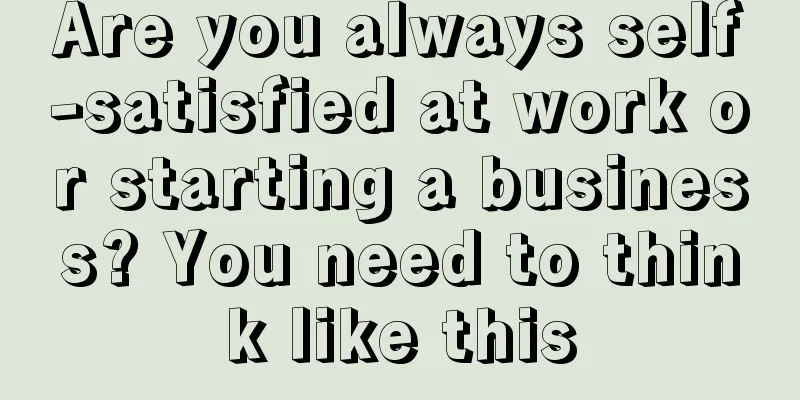
"Your solution is not good. You are just making yourself happy. Have you ever thought about it from the user's perspective?" Lack of thinking from the user's perspective is the root of all failure. Whether it is being criticized in the workplace, a commercial product failure, or even a relationship breakdown, or constant quarrels with family members, these problems ultimately come from a lack of empathy. The ability to think from another's perspective is so basic that it is related to IQ, EQ, and adversity quotient, but not many people have truly mastered this ability. You often see examples like this: entrepreneurs clearly think a product is great, "I would definitely use it if it were me", but the actual market response is minimal. For example, the first e-reader to be launched was not Amazon's Kindle, but Sony's Librie, which was three years earlier. At the time, many critics believed that this would be a groundbreaking product, but the market had basically no response. What's the problem? In fact, most of the time, failure is not because they don’t think in other people’s shoes, but because they miss out on important parts. Just like the Nine Yin Manual in The Legend of the Condor Heroes, if you only learn the moves but not the mental skills, of course you can’t exert the power. So why do so many talented people fail because of this? What went wrong? Let me first explain the concept of empathy. In fact, it consists of two parts:
01The first step to empathy is to change your perspective. The human brain has a tendency to be “self-perspective” and we care about and express our own feelings first. For example, when you are walking and looking at your phone, and your knee accidentally hits the table next to you, the first thing you would say is “Oh shit, my knee hurts so much”, this is self-perception. If you think in terms of object vision, the first thing you should say is "Oh, I knocked the table crooked." "Self-vision" is actually a manifestation of enhanced self-protection, and its inheritance to this day is the result of the evolutionary scissors of natural genes. Just imagine that humans in ancient times lived by gathering and hunting. There were two types of people among them. One type would run away immediately for their own safety when they heard the slightest movement of wild beasts in the jungle; the other type would walk forward to study what caused the wind to blow the grass when they heard the movement. Whichever of these two types of people can survive longer is our ancestor. Given the human brain's tendency to focus on the self-perspective, switching perspectives is actually counterintuitive and valuable. Here are a few common examples: You and your colleagues have a disagreement in a work meeting. During the process, you should not consider how to refute the person in front of you, but switch your perspective to the person who can make the final decision in the meeting and think about how to make your boss think your proposal is more reasonable. In a debate competition, the debaters on both sides should not consider refuting the other party's point of view (there is no right or wrong in the debate topic), but switch the perspective to the audience and judges, and think about how to perform so that the third party thinks that you performed better. In the education of children, you should not think about explaining how correct a certain behavior is, but switch your perspective to the child, think about what is right and wrong in his cognition, and what he cares about and is anxious about. When developing a new product, you should not think about how to convince your R&D colleagues to prioritize your needs, but switch your perspective to the user and think about how much inconvenience the lack of functions will cause to the user. Switching perspectives is the basis of empathy, but is this enough? The answer is no, because this cannot explain why many star companies also fail in their projects. After all, you would not believe that corporate executives do not know how to think from the user's perspective. So what is the point that makes everyone fail? The answer is actually in the analysis of the process of empathy above. Let me first draw a conclusion. In many cases, it is not that you do not know how to switch perspectives, but that you do not analyze the user's situation after switching perspectives. In other words, you change your perspective but do not think it through. Today I will share with you two of the most common mistakes I have observed in scenario analysis: Selection bias - not taking a favorable position in reducing the user's intangible costs Cognitive bias - ignoring the biggest cognitive obstacle to user decision-making 02When we talk about how to satisfy consumers, what comes to mind most often is “reducing consumer costs and maximizing consumer benefits.” This sentence itself is correct, but the first minefield is that you think that a product can successfully enter the market if it is cheaper, and simply equate "price" with "cost." In fact, the cost of buying and using products by consumers is far more than just the price. It also includes these intangible costs: making a choice (carefully comparing various products), purchasing and obtaining products (buying offline or receiving express delivery), learning once (learning to use the product), and usage costs (time of each use). Many failure cases are due to not considering intangible costs and over-imagining the attractiveness of low prices. For example, the Sony Librie reader mentioned above has set industry standards for e-ink technology, claiming to provide a physical-like e-reading experience, and the price of reading a book can be one-third lower than that of a physical book. This price-performance ratio seems very attractive to users. However, in actual use, users found that to read books with Librie, they must first download e-books from online bookstores to their computers, and then transfer them from their computers to Librie. In addition, every firmware upgrade requires users to go to a Sony service center in person, which greatly increases the cost of use. As a result, the Amazon Kindle reader that entered the market three years later occupied 62% of the e-reading market share in just five years, while Librie only had a 2% share at that time, because Kindle users only needed to connect to the 3G network to read books with one click. From this case we can see the huge impact of usage cost on users. In addition to the cost of usage, here is another case study of a company that improved the cost of user acquisition and turned around from failure. Zipcar started car-sharing in 1999 and was one of the earliest companies in the industry, saving users money on gas, parking and maintenance, making travel costs lower than owning a car. However, from 1999 to 2003, the company only accumulated 6,000 members in three cities, and its development was slow. Just as the company's last round of financing fell through and it was on the verge of bankruptcy, the new CEO conducted a key user survey and found that the most common complaint from users was that "it takes more than 5 minutes to walk to the parking location." This shows that users do have demand, but the time cost to obtain this product is too high. In short, it is extremely inconvenient. But when financing fails and funds are limited, how can we increase the density of the fleet and make it more convenient for users? The new CEO decided to abandon the multi-city development strategy and prioritize all resources to focus on a few key nodes in a city's residential area and focus on serving the student population in the neighborhood. This strategy, known as "instant density," gave the company a new lease of life. By deeply penetrating cities one by one, the company entered a new round of healthy development and eventually reached a scale of $1 billion. Different industries have different key intangible costs. When it comes to travel, users first consider convenience (the cost of obtaining the product) and then price. Therefore, innovation that simply saves money will not work. Intangible costs hinder user decision-making not only in the acquisition and usage stages, but also in the learning costs. For example, regarding the demand for graphic editing, the reason why Meitu was able to expand rapidly was that it grasped the key cost of learning (it is really not easy to learn to use Photoshop), making the product not only low-priced but also easy to use. Today, brands are successful because of their blockbuster product strategies, such as Moutai in the distant past and Luckin Coffee in the recent past. In fact, this is a means to reduce the user’s selection cost. I will not give detailed examples here. In short, if you can save intangible costs at key points in the process from user selection to product use, you can win their choice. 03The second minefield of scenario analysis is cognitive bias, which does not take into account the psychological obstacles of users. There are three main factors: individual factors - personal psychological accounts cultural factors - group stereotyped cognition social factors - self-concept image Sometimes it’s not that your product is not good enough, but that it is not worth the price in the user’s perception. There are many psychological accounts in our hearts, and every penny is labeled with its purpose. For example, if Melatonin was positioned in the "health maintenance account", sales would not be so large, because Chinese consumers had low trust in health products at that time. However, if it was positioned in the "emotional maintenance account" as a gift product, consumers would be willing to pay for it, and spending money in this account would be too much to spend. Cultural factors can also cause unexpected product failures because different groups may have completely different interpretations of the same objective phenomenon. Last century, Gerber, the baby food company owned by Nestlé, wanted to sell baby food in West Africa and printed their classic baby pictures on the food cans. In most cultures around the world, it is a normal design to print pictures of babies on baby video packaging. But when this product was launched, it was immediately rejected by local supermarkets. It turns out that since most people in Africa are illiterate, the pictures on food packaging generally represent the main ingredients of the food. For example, if there is a tomato printed on the can, it means that the food inside is made of tomatoes. Therefore, no one dares to buy baby food printed on the can. Even a large company like Nestlé will fail if it ignores the obstacle of local culture. Just like when you tell your grandmother that you are a "product manager", the first thing she will ask is "How many people do you manage now that you are a manager?" The influence of stereotypes in culture is very large. While paying attention to society and culture, you cannot ignore personal emotions. In addition to basic functions, contemporary people care more about whether the products conform to their ideal self-image when using products. For example, if you want to persuade someone to go on a blind date, she may have this need, but she is unwilling to go because the word blind date has the subtext of "being left behind". If you change the blind date activity to "high-end social networking", "friendship party", or "marriage and dating", she will be willing to go. Similarly, many health products have also avoided this psychological barrier. For example, if a weight loss product is directly called weight loss, it will definitely not work, because this defines the user as "having obesity problems". However, if it is called "Healthy 0 Sugar" or "0 Fat Burning", it can eliminate the psychological burden of consumers. This is the same as the menopausal product called "Calming Oral Liquid". In short, when you want to change a person's behavior, in addition to thinking about the intangible costs of this behavior, you also need to ask yourself questions like: "In their cognition, what socio-cultural or emotional factors might prevent them from changing?" 04In general, if you want to truly master the thinking of empathy, you have to temporarily be an "abnormal person", overcome the "self-perspective" trap and use situational analysis to understand your users. Many people can switch perspectives, but ignore thinking from the other person's perspective. Today I mainly share two of the most common and easily overlooked minefields in pros and cons analysis:
I hope the above can inspire you. |
<<: Lei Jun’s god-level marketing has driven the price of a Porsche down to RMB 400,000!
>>: Indicator movement analysis, the best strategy is here
Recommend
What are the benefits of Wanyitong?
For job seekers, understanding a company's tre...
The most complete guide to building an operations data analysis system is here!
The operations department has always been the larg...
One evening show, forty years, trillions of business opportunities: the secret history of Spring Festival Gala sales
The Spring Festival Gala, as a cultural event on C...
The most discouraging Spring Festival marketing campaign in the Year of the Snake! Major brands are rolling up their sleeves
As the Spring Festival of the Year of the Snake ap...
What should official accounts do in 2023?
Should you give up your WeChat account? Maybe you ...
From VIP to SVIP, what are iQiyi, Youku and Tencent Video worried about?
From VIP to SVIP, the charging model of long video...
Announcement on the Optimization of the Decision of the DHgate Dispute Response System
DHgate.com released an announcement on the optimiz...
How do cross-border e-commerce companies select products to avoid returns? How are they charged?
After opening a store on a cross-border e-commerce...
Good planning is the driving force for a company's rapid growth
In the eyes of many people, planning is a rigid pl...
Can Wish still be done in 2021? Why?
The cross-border e-commerce industry is developing...
iQIYI's "Matryoshka Membership" has robbed the precious VIP members
In 2022, the development of long videos is becomin...
From "brainwashing hits" to IPO: What did Mixue Bingcheng do right in its brand marketing?
From the viral spread of the "brainwashing di...
Stephen Chow made a short drama and earned 30 million from the first episode?
This article focuses on Stephen Chow's latest ...
Apple AI: Not many surprises, but it set an example for Android phones
Although Apple does not have many technological in...
Customized travel "borrows the channel" from Xiaohongshu
In the tourism industry, suppliers have discovered...
